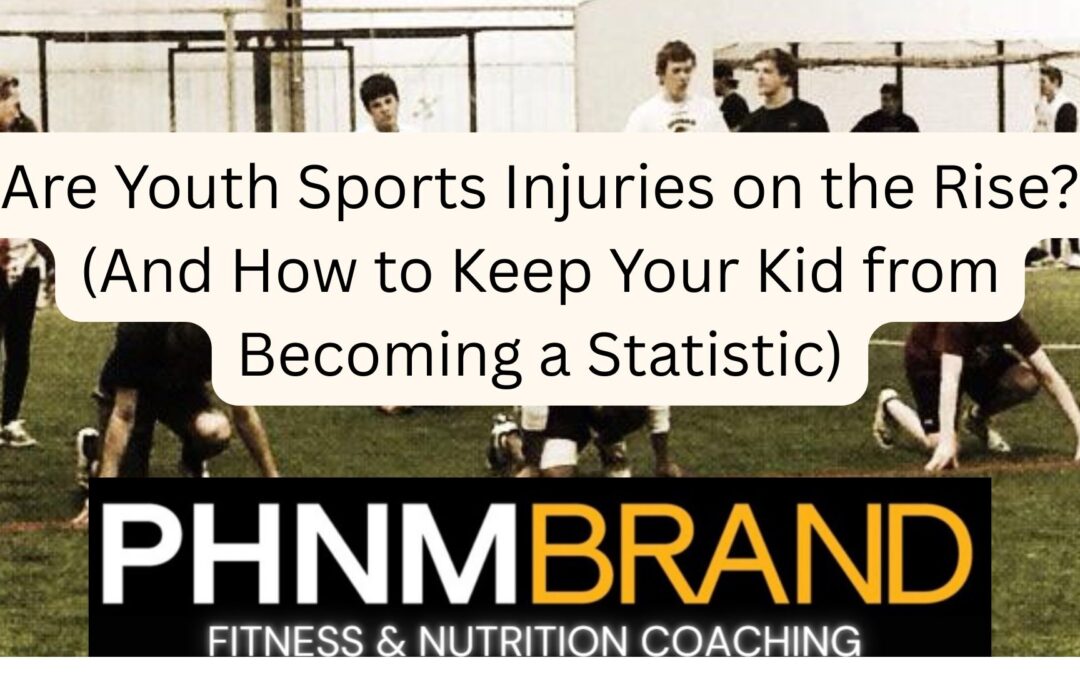Are Youth Sports Injuries on the Rise? (And How to Keep Your Kid from Becoming a Statistic)
We all want our kids to be active, healthy, and maybe even score the game-winning goal. But let’s be real—no parent wants their child’s sports highlight to be a trip to the ER. Unfortunately, youth sports injuries are becoming more common, and if we don’t take action, our little MVPs might be spending more time on the sidelines (or in a cast) than on the field.
So, what’s causing this spike in sports injuries? And more importantly, how can we keep our young athletes from racking up more injuries than points? Let’s break it down.
The Stats: A Reality Check for Parents
If you feel like more kids are getting injured playing sports these days, you’re not imagining things. Studies show a hugerise in youth sports injuries:
-
Overuse injuries now account for nearly 50% of all middle and high school sports injuries (CDC). That means half of all sports injuries aren’t from big, dramatic falls—they’re from doing the same thing over and over (and over) again.
-
Elbow and shoulder injuries in young baseball and softball players have skyrocketed by 500% since 2000(American Orthopedic Society for Sports Medicine). Apparently, kids’ arms aren’t meant to throw 1,000 pitches a week—who knew?
-
The increase in training intensity and year-round play has led to a surge in ACL tears, stress fractures, and even burnout among young athletes. And no, “burnout” isn’t just an excuse to play more video games.
Why Are Kids Getting Hurt More?
While we’d love to blame video games, TikTok, or whatever else parents complain about these days, the real reasons are a little more serious:
1. Early Sports Specialization (AKA “One-Sport Syndrome”)
Back in the day, kids played multiple sports, ran around outside, and climbed trees like little maniacs. Now, many kids focus on just one sport year-round, repeating the same movements non-stop. The result? Overuse injuries and imbalances that make their bodies about as stable as a Jenga tower.
2. Too Much, Too Soon
Somewhere along the way, youth sports went from “fun and games” to “train like a professional athlete at age 10.” Between extra practices, personal trainers, and travel teams, kids’ bodies aren’t getting the rest they need to recover. And spoiler alert: rest is not the enemy.
3. The Quest for Maximum Effort (And Maximum Injuries)
Coaches love to preach about “giving 110%,” but in reality, that extra 10% might just be what sends a kid straight to the doctor. In baseball, for example, the obsession with throwing harder has led to a sharp rise in elbow injuries. Turns out, there is such a thing as trying too hard.
4. Recovery? Never Heard of It.
Between school, sports, and social media scrolling marathons, today’s kids aren’t exactly getting their full eight hours of sleep. Poor recovery = higher injury risk, and let’s be honest, most kids would rather power through pain than sit out a game. (Because missing a game is basically the end of the world when you’re 12.)
How to Keep Your Kid in the Game (and Out of a Cast)
You don’t have to wrap your child in bubble wrap (though we won’t judge if you do). Instead, try these parent-approved injury prevention tips:
🛑 Encourage Multi-Sport Play – Help your child develop a variety of movement skills by playing different sports. It’s like cross-training, but for kids.
⏳ Make Rest Days Mandatory – No athlete, no matter how talented, can perform well without rest. So yes, telling your kid to take a break is actually good parenting (even if they roll their eyes).
💤 Prioritize Sleep and Recovery – If your kid is getting less sleep than a college student during finals week, it’s time to make some changes. Sleep is when the body repairs itself, so aim for 9–10 hours per night.
🥦 Fuel Like a Pro – A diet of pizza and energy drinks isn’t going to cut it. Make sure your child is getting enough protein, healthy fats, and carbs to support their training.
📚 Educate on Proper Form – Whether it’s throwing, running, or tackling, learning proper technique can dramaticallyreduce injury risk. Because “winging it” doesn’t work when it comes to sports mechanics.
👨⚕️ Listen to Their Bodies – If your kid is complaining about pain, take it seriously. Playing through an injury can turn a minor problem into a major one. (And no, “it’s just a little sore” is NOT always a good excuse.)
Final Thoughts: Let’s Keep Kids Safe & Strong
Youth sports are awesome for building confidence, teamwork, and lifelong fitness habits. But if we don’t take injury prevention seriously, we’re setting our kids up for frustration, setbacks, and way too many visits to the doctor.
The good news? With the right balance of training, rest, and smart recovery strategies, we can help young athletes stay strong, healthy, and game-ready—without breaking down before they even hit high school.
Now, go forth and be the awesome, injury-preventing parent your kid totally appreciates (even if they don’t say it out loud). 🚀

